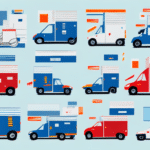Understanding the USPS Fuel Surcharge and Its Impact on Shipping Costs
For small business owners, managing expenses is crucial to maintaining profitability. One significant expense that can affect your bottom line is shipping costs. The United States Postal Service (USPS) is a popular shipping option, but understanding the USPS fuel surcharge is essential to effectively managing these costs. This article provides a comprehensive overview of the fuel surcharge, its calculation, impact on businesses, and strategies to mitigate its effects.
The Purpose and Calculation of the USPS Fuel Surcharge
Why the Fuel Surcharge Exists
The USPS fuel surcharge is designed to account for fluctuations in fuel prices within the transportation industry. As fuel costs rise or fall, the surcharge adjusts to help USPS maintain profitability while continuing to offer competitive shipping rates. This practice is common among major carriers, including FedEx and UPS.
How the Surcharge is Calculated
The USPS fuel surcharge is based on the national fuel price index, calculated weekly by the U.S. Energy Information Administration (EIA). The surcharge percentage varies weekly, reflecting changes in fuel prices. For example, as of early 2024, the surcharge ranges from approximately 10% to 15% of the base shipping rate, depending on current fuel costs and package specifications.
Factors influencing the surcharge include global oil prices, geopolitical events, and seasonal demand. Accurate calculation ensures that the surcharge remains aligned with actual fuel expenses.
The Impact of the USPS Fuel Surcharge on Small Businesses
Small businesses that rely heavily on shipping can be significantly affected by the USPS fuel surcharge. With tight profit margins, even small increases in shipping costs can impact overall profitability. The surcharge can vary based on package size, weight, and destination, making it essential for businesses to monitor and adapt to these changes.
According to a 2023 small business report by UPS, shipping costs account for an average of 8% of total expenses for online retailers. Fluctuations in fuel surcharges can thus have a noticeable effect on the financial health of these businesses.
Strategies to Manage Shipping Costs Amid Fuel Surcharges
Optimize Packaging and Consolidate Shipments
Reducing package size and weight can lower shipping costs. Consolidating multiple orders into a single shipment can also decrease the number of packages and the associated surcharges.
Leverage Shipping Software and Tools
Utilizing shipping software can automate rate calculations and help identify the most cost-effective shipping options. Tools like the USPS Pricing Calculator allow businesses to compare rates and select the best options based on current surcharges.
Take Advantage of USPS Discounts and Promotions
The USPS offers various discounts for businesses, such as bulk shipping rates and special promotions. Staying informed about these offers can lead to significant savings. For detailed information, visit the USPS Business Solutions page.
Comparing USPS Fuel Surcharges with Other Shipping Carriers
When evaluating shipping options, it's important to compare the USPS fuel surcharge with those of other carriers like FedEx and UPS. Each carrier has its own method for calculating fuel surcharges, which can vary based on volume, weight, and shipping distance.
For instance, FedEx's fuel surcharge is typically around 5-7%, while UPS's surcharge ranges between 10-15%, similar to USPS. Additionally, some carriers offer fuel surcharge waivers for high-volume shippers, which can be a deciding factor for businesses with substantial shipping needs.
Refer to the individual carrier websites for the most current surcharge rates and policies:
Future Outlook of the USPS Fuel Surcharge
The USPS fuel surcharge is expected to remain a critical component of shipping costs, adapting to ongoing fluctuations in fuel prices. Potential changes may include a tiered surcharge system based on shipping distance or the introduction of peak season surcharges during high-demand periods.
As of 2023, discussions within the transportation industry suggest that fuel surcharges will continue to evolve to reflect more dynamic pricing models. Businesses should stay informed about these changes by regularly reviewing USPS updates and industry news.
For the latest information, visit the USPS Newsroom.
Common Misconceptions and Negotiation Tips for Fuel Surcharges
Debunking Misconceptions
- All Packages Are Affected: Contrary to popular belief, fuel surcharges apply to all package sizes and weights, not just large or heavy shipments.
- Surcharge is a Hidden Fee: The fuel surcharge is transparently calculated based on fuel price indices and is not an arbitrary fee to increase profits.
Negotiating Shipping Rates
Small businesses can negotiate better shipping rates by leveraging volume discounts and building long-term relationships with carriers. Presenting data on shipping volumes and demonstrating consistent business can enhance negotiation power.
Additionally, exploring partnerships with regional carriers or using third-party logistics providers can offer alternative shipping solutions that may bypass certain surcharges.
For more negotiation strategies, refer to resources like the American Express Business Guide.
Conclusion
Understanding the USPS fuel surcharge is vital for small business owners looking to manage shipping costs effectively. By staying informed about surcharge calculations, exploring alternative shipping options, and utilizing cost-saving strategies, businesses can mitigate the impact of fuel surcharges and maintain profitability in a competitive marketplace.






















